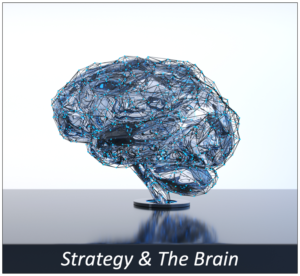 It’s a common problem after developing a strategy. Execution begins with great zeal but in a short period of time, the higher priority strategic efforts begin to take a back seat to less important but more urgent daily matters. Firefighting is a similar problem. “Distractions” keep you from the important things you really want to do.
It’s a common problem after developing a strategy. Execution begins with great zeal but in a short period of time, the higher priority strategic efforts begin to take a back seat to less important but more urgent daily matters. Firefighting is a similar problem. “Distractions” keep you from the important things you really want to do.
The human brain is a wondrous creation. It enables us to sort through and prioritize millions of input signals a second. It’s this capability that needs to be exploited to keep strategic efforts on track.
There are different kinds of focus or attention. For example, there’s selective (focus on one thing to the exclusion of all others), divided (to manage several things at once), and sustained (staying focused on one thing for long periods of time). But no matter what kind of attention you are employing, distractions break your focus. Distractions can range from small things like noises, email, phone calls, and social media, to bigger things like, well, actual fires. And in this day and age, distractions are plentiful.

To handle distractions, the brain has its own “braking mechanism”. It processes some impulses and suppresses or puts the brakes on others. Using this brain braking system literally enables you to be so focused on one thing that you fail to notice someone is talking to you trying to get your attention. The ears have heard it but the brain as put the brakes on processing the sounds.
It is this innate skill that employees need to develop and hone to stay focused on strategic efforts (sustained attention) and not get sidetracked by the many distractions they’re likely to encounter. But leaders need to help them.
To do that, leaders need to remember that in our strategy development workshops we discuss how the new strategy represents a set of new choices and that part of the new focus is deciding what not to do anymore. In other words, effective strategy requires a braking system that suppresses the distractions of the old in order to focus on the new for a sustained period of time. Leaders can reinforce this strategic attention by not only reminding employees of the new focus of work but also reminding what not to do anymore.
Leaders need to continually put the brakes on the distractions from strategic efforts.